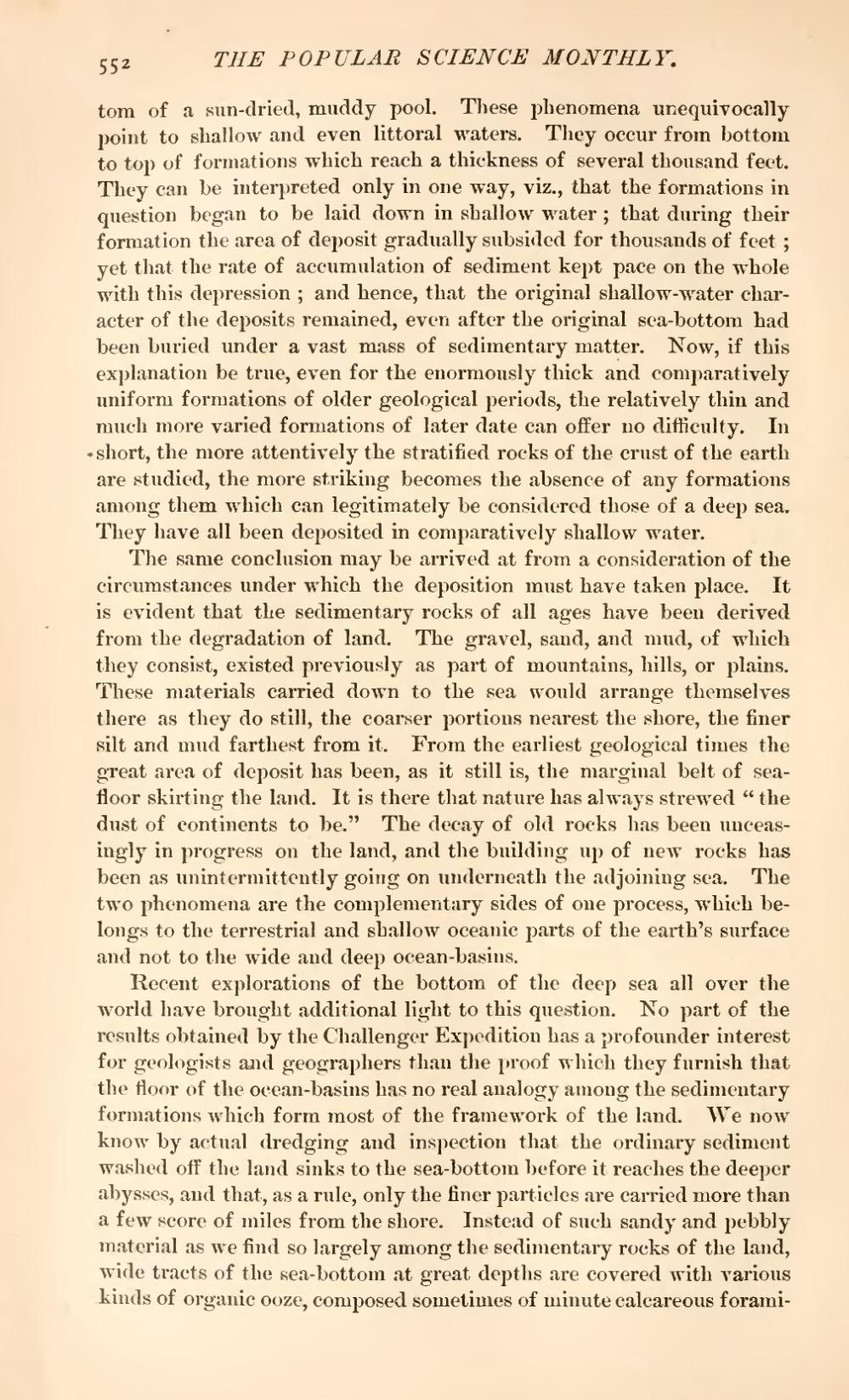tom of a sun-dried, muddy pool. These phenomena unequivocally point to shallow and even littoral waters. They occur from bottom to top of formations which reach a thickness of several thousand feet. They can be interpreted only in one way, viz., that the formations in question began to be laid down in shallow water; that during their formation the area of deposit gradually subsided for thousands of feet; yet that the rate of accumulation of sediment kept pace on the whole with this depression; and hence, that the original shallow-water character of the deposits remained, even after the original sea-bottom had been buried under a vast mass of sedimentary matter. Now, if this explanation be true, even for the enormously thick and comparatively uniform formations of older geological periods, the relatively thin and much more varied formations of later date can offer no difficulty. In short, the more attentively the stratified rocks of the crust of the earth are studied, the more striking becomes the absence of any formations among them which can legitimately be considered those of a deep sea. They have all been deposited in comparatively shallow water.
The same conclusion may be arrived at from a consideration of the circumstances under which the deposition must have taken place. It is evident that the sedimentary rocks of all ages have been derived from the degradation of land. The gravel, sand, and mud, of which they consist, existed previously as part of mountains, hills, or plains. These materials carried down to the sea would arrange themselves there as they do still, the coarser portions nearest the shore, the finer silt and mud farthest from it. From the earliest geological times the great area of deposit has been, as it still is, the marginal belt of sea-floor skirting the land. It is there that nature has always strewed "the dust of continents to be." The decay of old rocks has been unceasingly in progress on the land, and the building up of new rocks has been as unintermittently going on underneath the adjoining sea. The two phenomena are the complementary sides of one process, which belongs to the terrestrial and shallow oceanic parts of the earth's surface and not to the wide and deep ocean-basins.
Recent explorations of the bottom of the deep sea all over the world have brought additional light to this question. No part of the results obtained by the Challenger Expedition has a profounder interest for geologists and geographers than the proof which they furnish that the floor of the ocean-basins has no real analogy among the sedimentary formations which form most of the framework of the land. We now know by actual dredging and inspection that the ordinary sediment washed off the land sinks to the sea-bottom before it reaches the deeper abysses, and that, as a rule, only the finer particles are carried more than a few score of miles from the shore. Instead of such sandy and pebbly material as we find so largely among the sedimentary rocks of the land, wide tracts of the sea-bottom at great depths are covered with various kinds of organic ooze, composed sometimes of minute calcareous forami-

